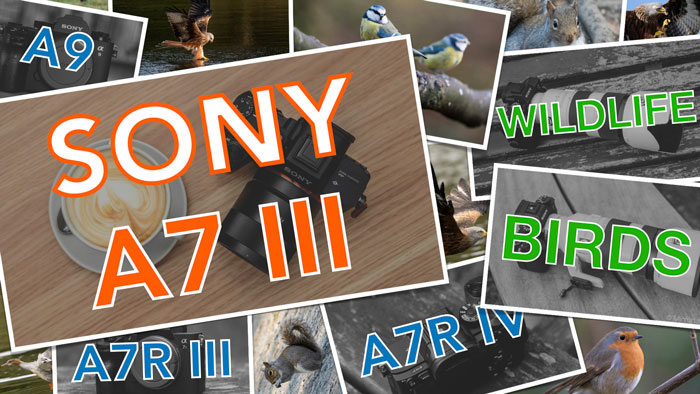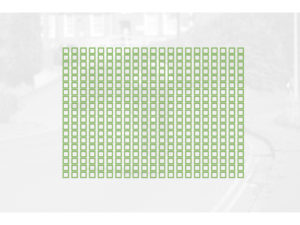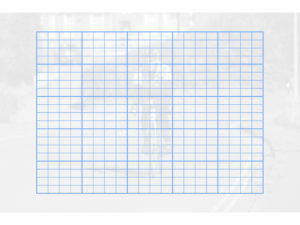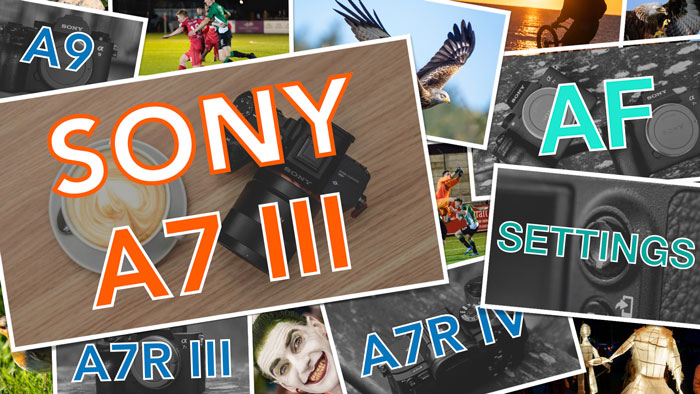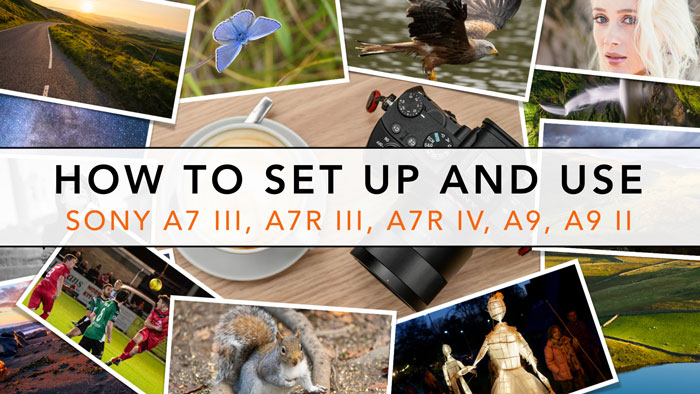Anyone who claims that mirrorless cameras cannot compete with DSLRs in this day in age certainly hasn’t spent any quality time with the Sony A9 or Sony A7r III. Both released in 2017, they target professional photographers and advanced amateurs with a need for high resolution, a snappy autofocus system, fast burst speeds and 4K video.
Whereas the A9 aims to conquer the hearts and minds of sports and wildlife photographers with its phenomenal AF system and burst speeds, the A7r III is more of an all-rounder as it balances excellent speed with a high megapixel count.
In the following comparison preview, we’re going to take a look at all the main differences between these two full-frame flagship Sony models and hopefully help you decide which is more suitable for your needs!
Update: the full A7r III vs A9 comparison is now online!
Ethics statement: The information supplied in this article is based on official specifications and our personal experience with the A7 series. We were not asked to write anything about these cameras, nor were we provided with any sort of compensation. Within the article, there are affiliate links. If you decided to buy something after clicking the link, we will receive a small commission. To know more about our ethics, you can visit our full disclosure page. Thank you!
1. Sensor
Although both cameras house a full-frame Exmor CMOS sensor, their characteristics differ, from the pixel count to the technology they incorporate.
The A7rIII, having inherited the same sensor from its predecessor, has the higher resolution of the two (42.4MP vs 24.2MP). It is a back-illuminated type that is capable of gathering more light than traditional CMOS chips and has been rated one of the best full-frame sensors on the market today.
The A9, on the other hand, benefits from an Exmor RS stacked sensor which uses an integral memory chip behind the back illuminated structure to process more data simultaneously. Sony states that this sensor, combined with the Hi-Speed signal processing circuit and the new BIONZ X image engine, is 20x faster than the A7r II, so we can speculate that it remains faster – albeit by a smaller degree – than the A7r III as well.
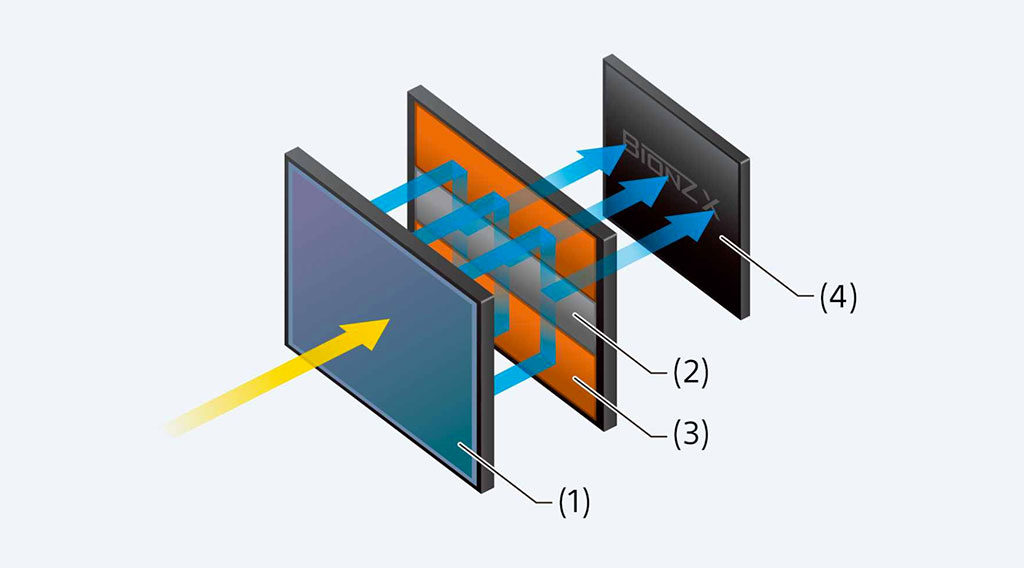
(1) Pixel area
(2) Integral memory
(3) Hi-speed signal processing circuit
(4) Image processing engine
Regarding the sensitivity, the A9 has a native ISO range of 100 to 51200 plus extended values: pull 50, push 102400 and 204800 ISO.
The A7rIII has an ISO range of 100 to 32000 with pull 50 and push 51200 / 102400 ISO values. In our personal experience with its predecessor, we found that despite the high resolution of the sensor, the results were excellent up to 6400. Considering the lower resolution of the A9, we wouldn’t be surprised if it performs better than the A7r III in terms of noise reduction (but this of course remains to be seen).
Both models support compressed or uncompressed 14-bit RAW output even during silent shoot and continuous shooting.
2. Electronic shutter
Thanks to the A9’s stacked sensor technology, you can do much more with its electronic shutter than you can with that of the A7r III.
The first difference is the maximum shutter speed: whereas the A7r III can only reach 1/8000s with the electronic shutter – which is the same maximum speed as its mechanical shutter – the A9 can go all the way up to 1/32000s.
Then we have the continuous shooting speeds. The A9 can shoot at speeds as high as 20fps with full sized RAW images and AF/AE tracking, while the A7r II tops out at 10fps.
If that weren’t enough, the sensor of the A9 employs anti-distortion shutter technology that effectively minimises rolling shutter for sports and action with the electronic shutter. Given that Sony makes no mention of anti-distortion technology for the A7r III, it is unlikely it will perform as well as the A9 in this regard.

It is worth noting that both cameras feature a first electronic curtain shutter option as well.
3. Continuous shooting
In addition to the highest 20fps speed, the A9 also has a Mid setting of 10fps and a Low setting of 5fps. 5fps is the maximum you can reach with the mechanical shutter, which means that to go any faster you must select the electronic shutter. The continuous shooting mode with the electronic shutter gives you a blackout free live view even when shooting at 20fps, which is a characteristic that sets it apart from the rest of the competition.
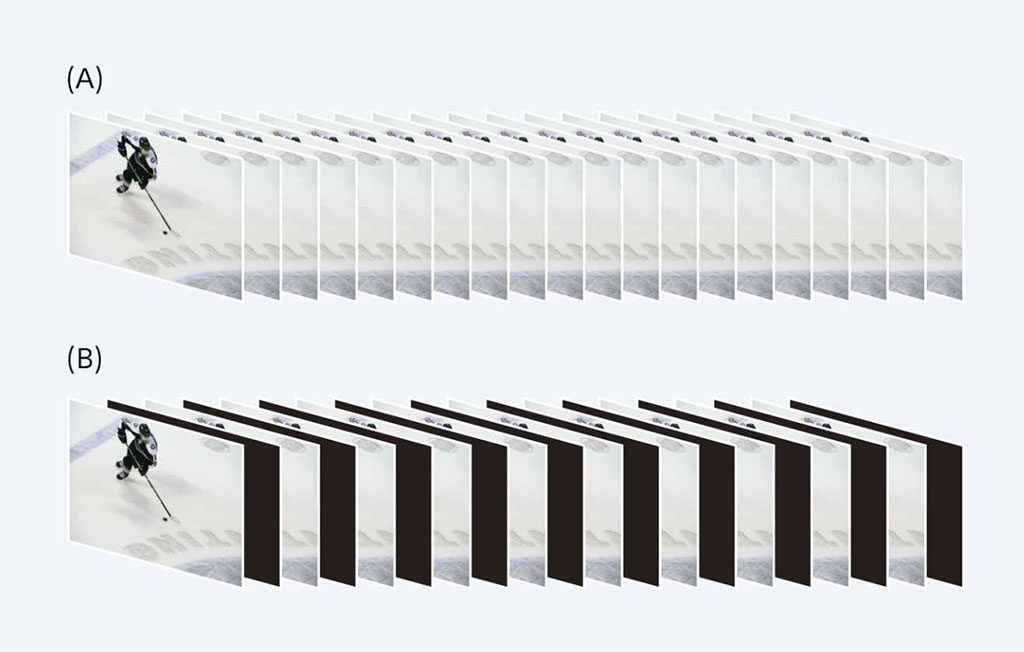
(B) Shooting with blackout
With the mechanical shutter, the A7r mark III is actually faster at 10fps. (There are also 6fps Mid and 3fps Low modes.) It will show you live view with short blackouts up to 8fps. At 10fps, the last image taken is shown instead.
4. Buffer depth
An advantage of the A9 is its superior buffer capabilities made possible by the stacked sensor technology. It can manage up to 362 JPGs or 241 compressed RAW images in a burst compared to the 28 JPGs and 76 compressed RAW files of the A7r III. (The lower resolution also helps of course!)
Both cameras allow you to shoot short bursts, review your images and enter the menu while the buffer is clearing but some functions remain inaccessible during the process.
5. Autofocus
Both the A7r III and A9 utilise Sony’s advanced hybrid autofocus system with contrast and phase detection points. Because the A7r III has inherited some characteristics of the A9’s autofocus algorithm, it promises improved AF speed, precision, and tracking – though just how it compares to the A9 has yet to be seen.
The biggest difference between the two AF systems is the number of phase and contrast detection points. The A9 has an impressive 693 phase detection points that cover 93% of the imaging area, as well as 25 contrast detection points.

The A7rIII, on the other hand, has a very respectable 399 phase detection points covering 68% of the image area but the number of contrast detection points has been boosted from 25 (on the A7r II) to 425.
Both cameras have a minimum focus sensitivity range that starts at -3Ev, allowing for better performance in low light situations compared to other full-frame E-mount cameras, as well as the useful Focus Area registration function first seen on the A9 that allows you to memorise and recall frequently used focus area settings with a custom button.
By mounting the LA-EA3 adapter on either camera, it is possible to use Sony A-mount lenses with focal plane phase detection AF. Note that the maximum speed drops to 10fps on the A9 when using DSLT lenses.
6. 5-axis image stabilisation
Both cameras benefit from in-body image stabilisation with 5 axis correction: Yaw, Pitch, Roll, X and Y. The system works with all E-mount lenses that feature electronic contacts and is effective for stills and video. With OSS lenses, the optical stabilisation is combined with the sensor shift.
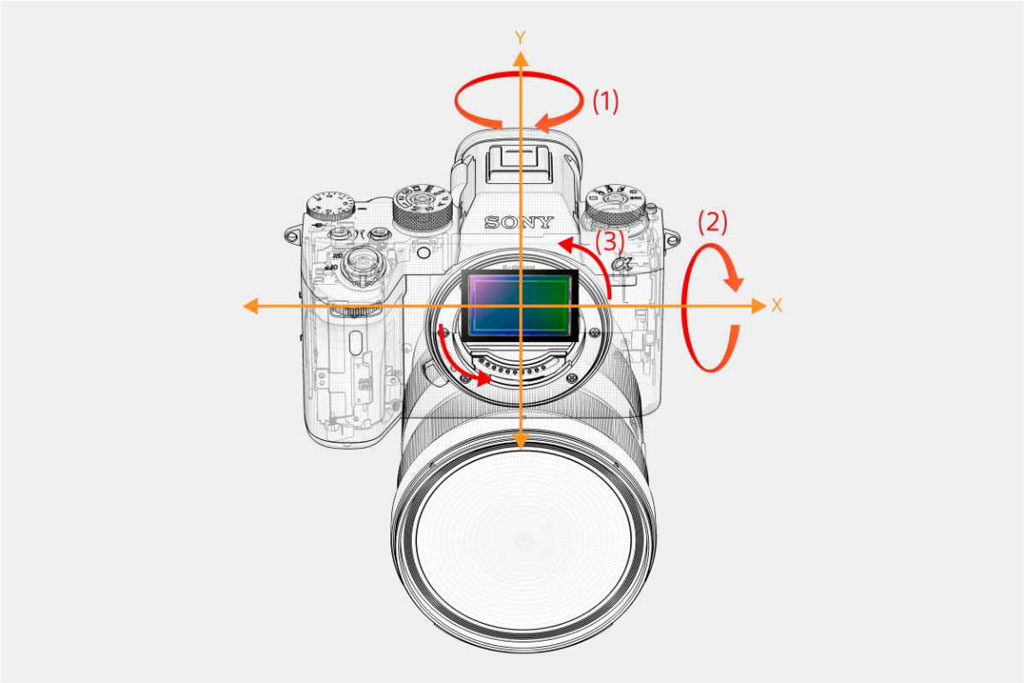
The difference between the two cameras is that the A7r II has a 5.5-stop compensation rating by CIPA standards whereas the A9 has 5 stop compensation. This means that the new hardware should provide a half-stop advantage, not to mention that it allows for a brand new feature as you will see below.
7. Pixel Shift Multi Shooting
The Pixel Shift Multi Shooting mode is a new feature currently exclusive to the A7r mark III.
Using the same mechanism required for 5-axis stabilisation, this new feature captures four separate images, each taken one pixel apart, that can then be combined with Sony’s imaging software suite to produce a single 42.4MP image with minimal moiré and colour artefacts. Each point represents R, G, and B information, so the resulting image produces better colour fidelity, resolution and texture reproduction. Because there is a delay between shots, it can only be used for static subjects.
Similar technology has been used on other mirrorless cameras such as the Olympus OM-D E-M5 II and E-M1 II but in the case of the Sony camera, the final composite doesn’t increase the resolution even though the total amount of data used equals 169.9MP.
8. Video capabilities
4K recording forms the backbone of all Sony cameras, so it shouldn’t be a surprise that both record in 4K up to 30fps and 100mbps with the XAVC S codec.
In the case of the A9, it over-samples 2.4x the amount of data required for 4K (in other words, the equivalent of 6K) into Ultra HD output. It does this with full pixel readout/no pixel binning and zero sensor crop in 24p and 25p, meaning that you can take advantage of the original angle of view of your full frame lenses. (The only frame rate at which there is a slight sensor crop is 30p according to EOSHD.) The sensitivity is excellent for video thanks to its a native ISO range of 100 to 51200 and an extended 102400 option.
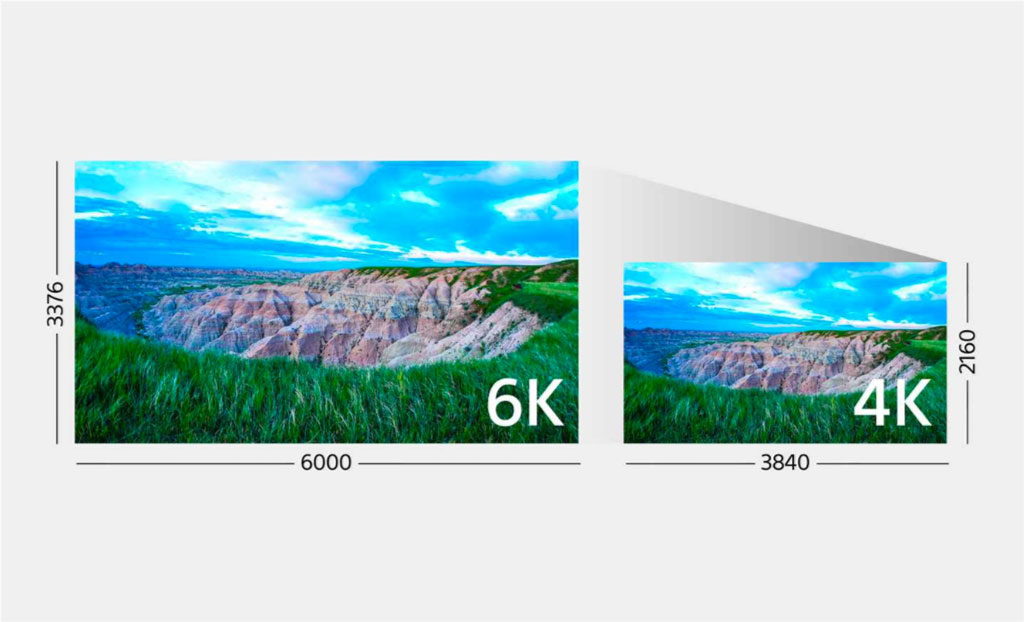
Due to its high megapixel count, the quality of the A7r mark III’s 4K footage is at its best when the Super35/APS-C mode is employed with a 1.5 sensor crop. In this case, the camera reads out 5K of information from the central portion of the sensor with no pixel binning and over-samples it before reducing it to 4K. You can of course record in 35mm format as well, though we’ve yet to see how good the quality is at the higher ISO values. (On its predecessor, the quality wasn’t particularly good past ISO 800 due to the high resolution and line skipping.) The sensitivity ranges from 100 to 25600 ISO.
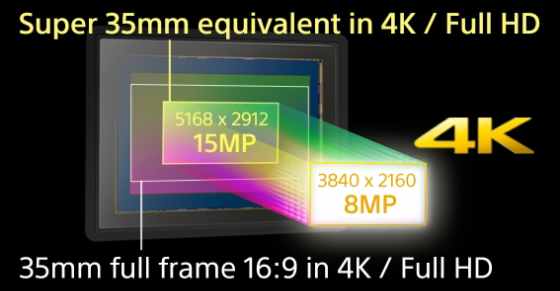
Both cameras provide good slow motion capabilities and can record in Full HD / 1080p up to 120fps. They share the S&Q mode (Slow and Quick motion) with selectable frame rates from 1fps to 120fps.
Concerning Sony’s picture profiles, the A7r III has the S-Log2 and S-Log3 gamma curves, as well as a new HLG (Hybrid Log-Gamma) profile for compatible HDR workflow and HDR TV monitors. It also features XAVC-S Proxy, a handy feature if you want to quickly edit your video at a lower resolution. Because the A9 primarily targets still shooters, all these profiles have been excluded, which is a shame given that most of its recent full-frame and APS-C products include them.
9. Body and design
The A7r III has retained the core design of its predecessor but gratifyingly, has also made room for many of the more appealing features of the A9, the most important being the extremely fluid Quad-VGA OLED electronic viewfinder and touch screen LCD.
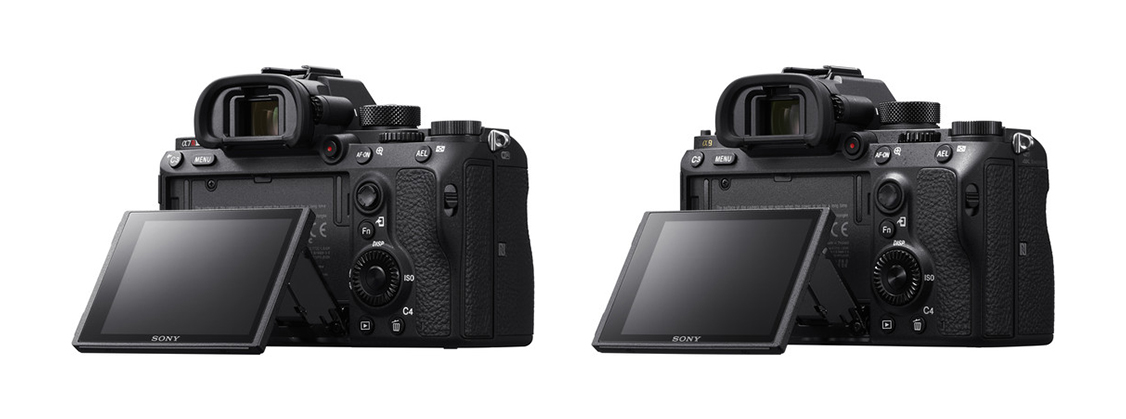
Also inherited from the A9 are the extremely handy AF joystick on the rear, the Dual SD card slot with one UHS-II compatible slot, relocated movie recording button, redesigned control wheel, flash sync port, and most importantly, the larger NP-FZ100 battery compartment.
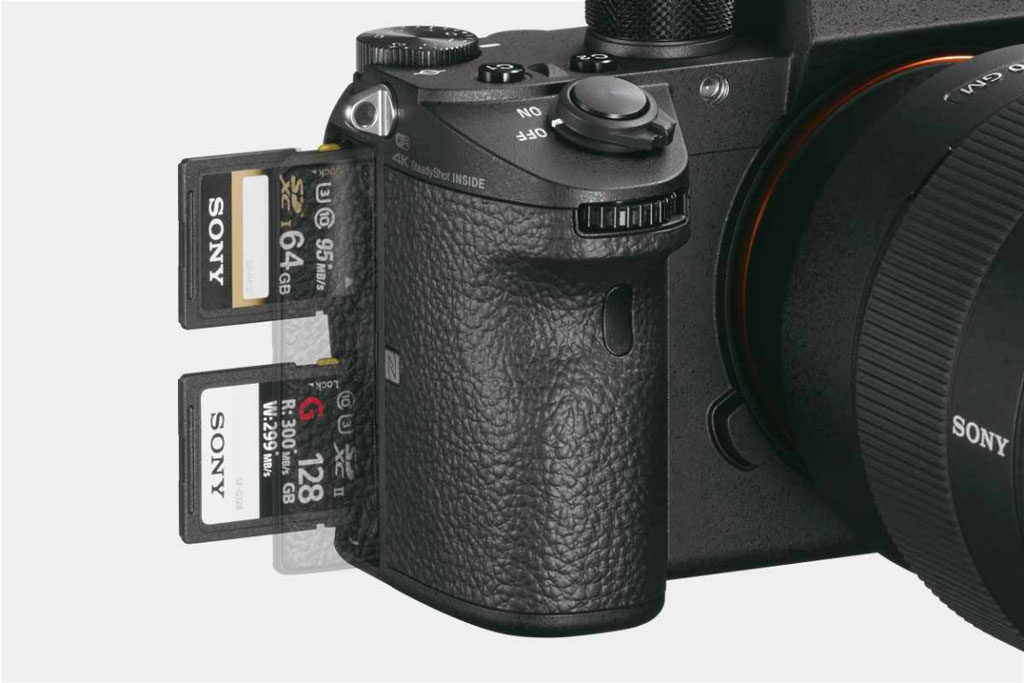
The A9 remains slightly heavier than the A7r III (673g vs 657g) but the dimensions are more or less identical. Both have a deep grip which should provide more support when using larger lenses.
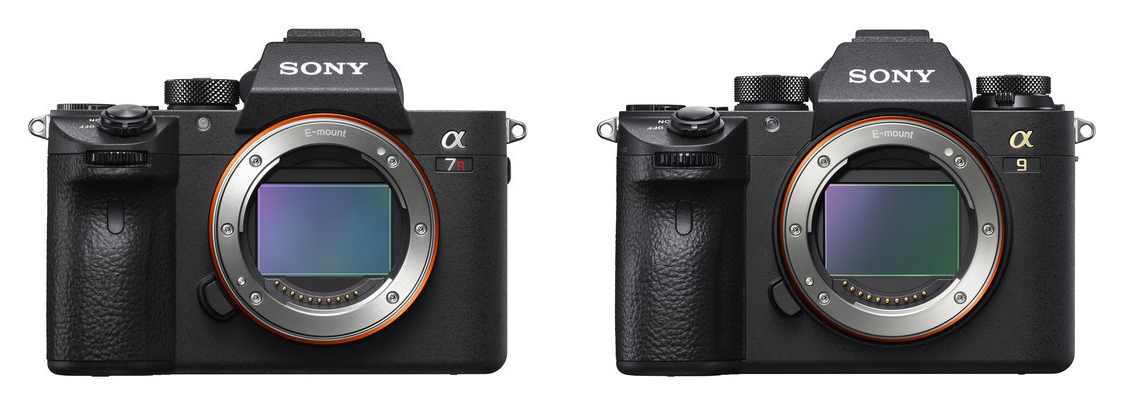
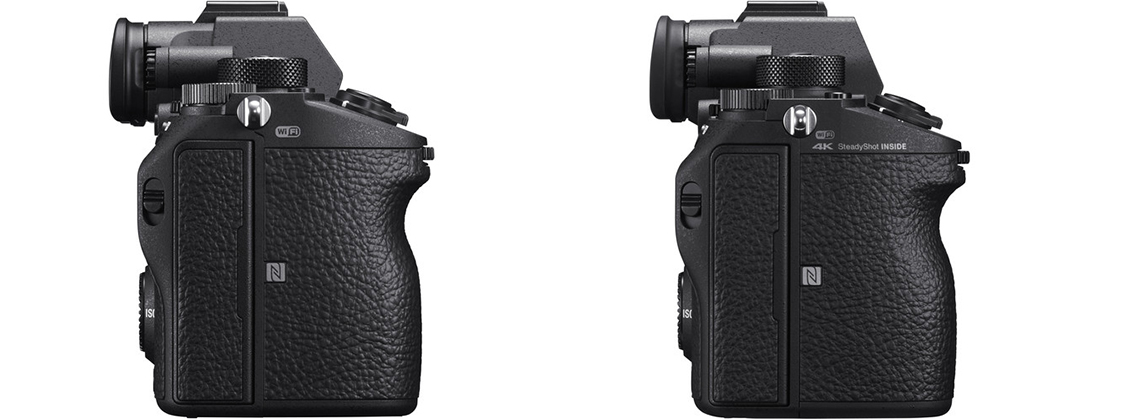
A feature exclusive to the A9 is the stacked dial to select the drive and focus modes which locks and unlocks via a button at the centre. It also has a hard-wired LAN terminal whereas the A7r II does not.
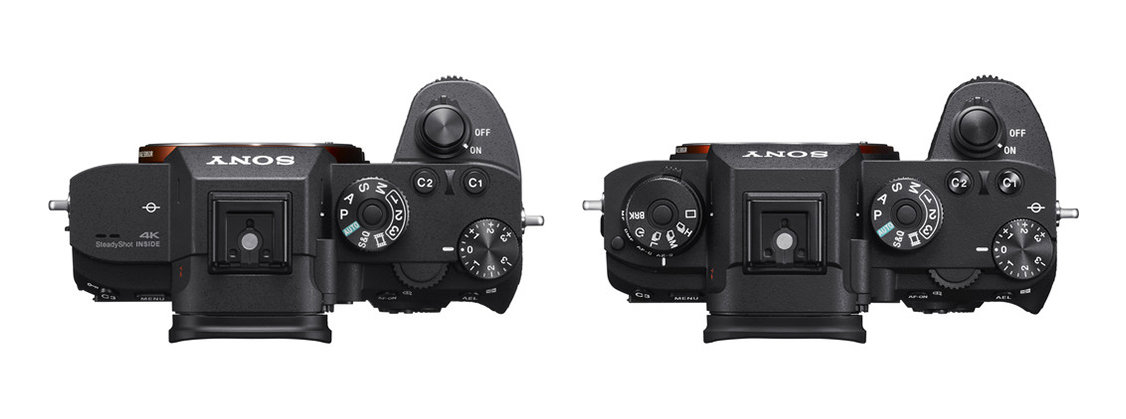
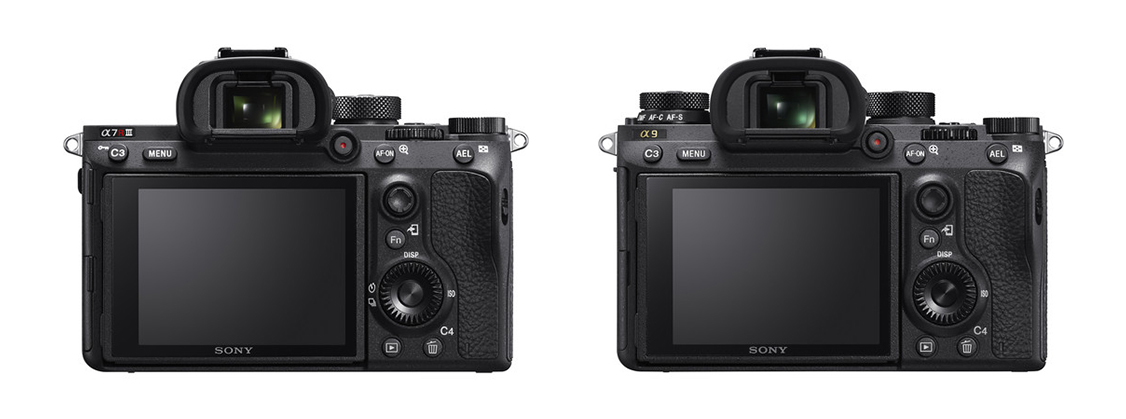
Both cameras have the new version of Sony’s menu system, as well as the My Menu option that allows you to save your favourite settings for immediate access.
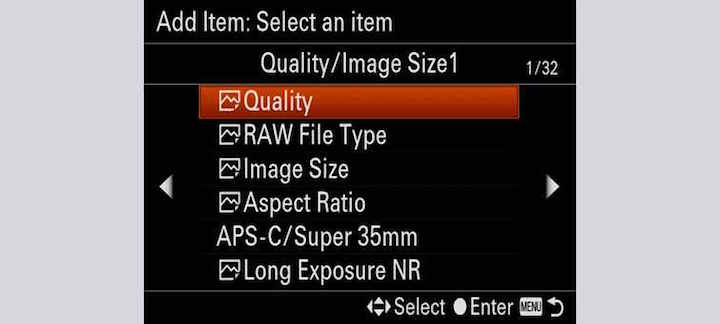
10. Price
The final difference certainly isn’t one to be underestimated. Despite the fact that the A7r III is the more recent model and features one of the best full-frame sensors on the market, it is still over $1000 cheaper than the A9 whose retail price is around $4500 US.
You may, of course, find the latter for less than the original retail price now that it has been on the market for a few months but nevertheless it remains an investment that merits some careful reflection, especially considering that the expenditure doesn’t end with the body – after all, every advanced camera requires at least one good lens to accompany it!
Conclusion
In the case of the A9, it is clear from its impressive continuous shooting speeds, buffer depth and AF system that Sony has set its sights on professional sports and wildlife photographers who want the best possible performance and speed.
The new A7r mark III, on the other hand, is a very interesting choice for those who want a well-balanced camera for a variety of genres. Its full-frame sensor remains one of the best on the market thanks to its high resolution, it benefits from the latest version of Sony’s 5-axis stabilisation system, and its autofocus performance and continuous burst speeds should now be more than sufficient even for whose who enjoy sports and wildlife. The camera also remains the more logical choice for advanced video makers because, unlike the A9, it includes picture profiles and S-Log2/S-Log3 modes – though, who knows, there might be a firmware update for the A9 one of these days!
Check the price of the Sony A7R III on:
Amazon | Amazon UK | B&H Photo | eBay
Check price of the Sony A9 on:
Amazon | Amazon UK | B&H Photo | eBay
Used Sony cameras on
MPB US | MPB UK

